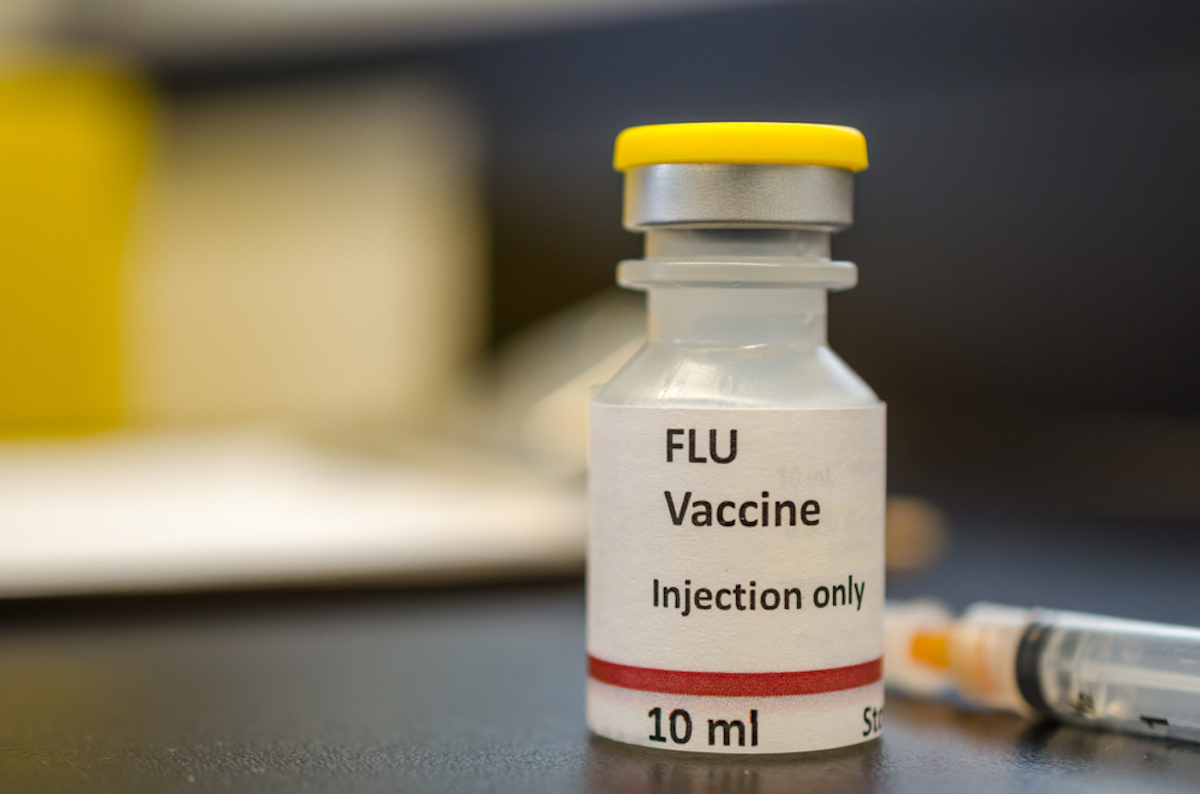This originally appeared in NPR. Read the full story here.
Get set for 2020’s mega-campaign against the flu amid the COVID-19 pandemic: immunization drives in the parking lots of churches and supermarkets, curbside inoculations outside doctors’ offices, socially distanced vaccine appointments held indoors, with breaks in between for disinfecting.
These are just some of the ways heath providers say they will give tens of millions of flu shots this fall — arguably the most important U.S. effort to prevent influenza’s spread among Americans in a century.
Flu shots will be in stock at doctors’ offices, pharmacies and supermarkets by early September. And though what’s normally thought of as flu season in North America doesn’t really begin until October and peaks between December and February, because of changes wrought by COVID-19, now is the time to start thinking about when, how and where you’ll get immunized against the flu this year.
“If you usually get the shot at the office but you’re working from home, for example, you’ll need a new plan, says Lori Uscher-Pines, a senior policy researcher with the Rand Corp. “And if you usually drop in to the pharmacy or the supermarket for your shot while you’re out and about anyway, you’ll need a new plan this year if, these days, you’re just not ‘out and about.’ ”
But do make a plan. “No year is a good year to get the flu, but this year — with COVID-19 also raging — it’s especially bad,” says Mark Thompson, an epidemiologist in the Influenza Division at the Centers for Disease Control and Prevention.
“People who can avoid the flu will help reduce the burden on a U.S. health care system already overwhelmed by COVID-19,” Thompson says.
Emergency rooms and urgent care clinics are often flooded with flu patients during winter months, he explains. So getting a flu shot can help prevent those visits — and thereby prevent the co-mingling of flu patients and COVID-19 patients, who can infect each other and spread their viruses to other ER patients.
“This year, more than ever, we’re trying to get out the message that flu is no benign disease and you should do everything you can to prevent it,” says L.J Tan, the chief strategy officer at the Immunization Action Coalition, a nonprofit group in St. Paul, Minn., that provides educational information for physicians and consumers on immunization. “In particular, get your flu vaccine. Take flu off the table.”
In most years, some who get the flu would reasonably choose to ride it out, feeling miserable for a week or so, or even shorten the illness by taking one of several prescription drugs approved to treat the illness, says Dr. Steven Pergam, an associate professor in the Vaccine and Infectious Disease Division at the Fred Hutchinson Cancer Research Center in Seattle.
But this year, “even people who never see a doctor for the flu might be prompted to book an appointment or head for the ER if they feel flu-like symptoms coming on,” Pergam says.
That’s because the flu and COVID-19 can share many (though not all) symptoms, including fever, chills, cough, sore throat, muscle or body aches, headaches and fatigue. Loss of taste and smell, which can happen with COVID-19, does not occur with the flu.
The flu is dangerous in its own right, hospitalizing and killing tens of thousands of people each year and sidelining millions more for days to weeks.
“And even if you might only have a few days of feeling poorly,” Pergam says, “transmitting the flu to babies, older people and people with compromised immune systems risks severe illness or death for them.”
Public health experts are also concerned about people having both the flu and COVID-19 at the same time. “We don’t know yet whether that could compound either illness, but why take the risk?” says Dr. Ashish Jha, director of the Harvard Global Health Institute.
Preliminary CDC data for the 2019-2020 flu season, which ended in May, found the flu to be a factor in at least 18 million visits to health providers in the U.S., 410,000 hospitalizations and as many as 64,000 deaths.
Still, of all Americans eligible for a flu shot (that’s nearly everyone over 6 months old), more than half don’t get immunized in a typical year, according to CDC data. Among the reasons people give: worry about side effects (serious ones are very rare), worry that the shot will give them the flu (it won’t), a belief that the flu isn’t all that serious (it can cause severe illness and death) and an aversion to vaccines in general.
The flu vaccine — whether given via a shot or a nasal spray — isn’t perfect. It’s designed toward the end of each flu season — February for the Northern Hemisphere and September for the Southern Hemisphere — based on the four most prevalent strains of the flu circulating at each time. The expectation of those designing the vaccine, often right, is that those will be the most common strains that people in each hemisphere will face in the following flu seasons.

